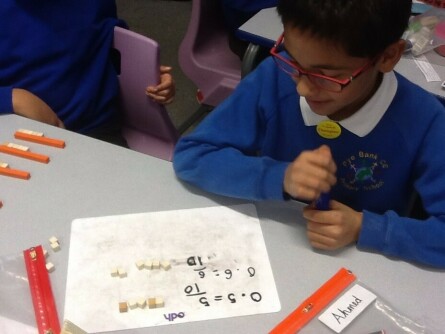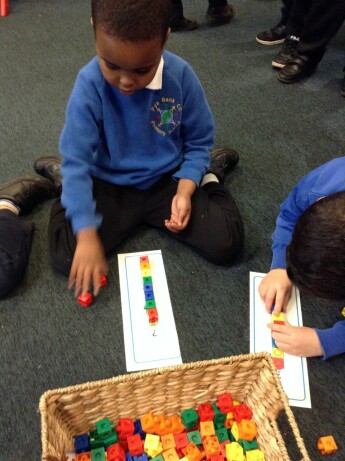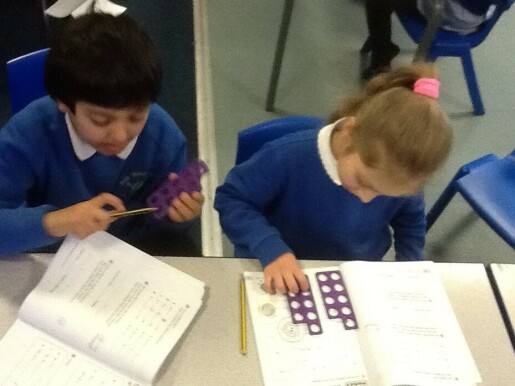What does Maths look like at Pye Bank?
Mastering Number
Pye Bank is taking part in the National Centre for Excellence in the Teaching of mathematics (NCETM) project. Mastering Number teaching isIn FS and KS1 we follow the Mastering Number Program to create a firm understanding of number sense. We engage with daily opportunities to retrieve and embed a range of skills within key areas of mathematics. sequenced in small, incremental steps ensuring that pupils are fully secure with a concept before moving on. Mastering Number supports pupils to be fluent in calculation by the end of Key Stage 1 and increases their confidence and ability to work flexibility with numbers.
This year KS2 children (Y3, Y4 & Y5) will also take part in the Mastering Number. This project enables KS2 pupils to develop fluency in multiplication and division facts, and a confidence and flexibility with number that exemplifies good number sense.

Fluency and Retrieval
Pupils have daily, well-planned opportunities to revisit prior learning and ensure that they have secured fluency in key concepts. This is done in a range of ways to best suit all of our learners. While this may be done before the start of the main maths session, the objective may be different.
KIRFS (Key Instant Recall Facts)
KIRFs are designed to support the development of the mental fluency skills that underpin much of the mathematics curriculum. They are particularly useful when calculating, adding, subtracting, multiplying or dividing.
Each year group is allocated up to six facts to focus on throughout the year, in line with the National Curriculum and age-related expectations. Time is dedicated at least once a week during Fluency Friday to ensure that the KIRF is practiced and learnt so that children grow in confidence to recall their facts instantly.
Instant recall of facts helps children to be confident mathematicians; when children move onto written calculations and abstract methods, knowing these key facts is crucial. For children to become more efficient in recalling them easily, they need to be practised frequently and in short bursts.
For this terms KIRFs please click here
Maths Sessions

FS2 Lesson Design
- In FS2, pupils meet the coverage and demands of the EYFS maths curriculum by closely following the NCETM Mastering Number programme. Alongside maths meetings, this ensures that pupils have a broad and balanced experience across all areas of mathematics. These are outlined fully in the EYFS Medium Term Overviews.
- Children in FS2 have a daily teacher-led session of 20 minutes in addition to their Maths Meeting. This is designed to ensure that pupils develop fluency with, and understanding of, number.
- Teachers and teaching assistants use well-planned, precise vocabulary to support the development of speaking and reasoning in mathematics.
- Pupils use physical and visual representations of rekenreks to support their mathematical thinking, tied in closely with the Mastering Number sessions.
- Additional concrete resources are used to deepen pupil understanding further, and support them to move onto a range of pictorial representations. By the end of the year, this includes representations such as part-part-whole models and tens frames to prepare them for maths learning in KS1.
- Continuous provision is planned carefully to link to current and prior maths learning, and allows pupils to see maths in different contexts.
KS1 and KS2 Lesson Design
- All lessons are carefully structured within a well-crafted sequence of learning following the White Rose small steps (see examples of MTP here). These can be more than one lesson where needed to enable teacher to engineer success and a mastery learning experience for all children.
 A small steps approach is taken within lessons so that lessons are inclusive of all learners and to avoid gaps in understanding and misconceptions developing. Where misconceptions do occur, teachers act on this: during the lesson, with focused rapid interventions, or by modifying their teaching in the next lesson.
A small steps approach is taken within lessons so that lessons are inclusive of all learners and to avoid gaps in understanding and misconceptions developing. Where misconceptions do occur, teachers act on this: during the lesson, with focused rapid interventions, or by modifying their teaching in the next lesson. - The ‘Explore’ part of lessons includes a low-floor, high-ceiling problem which ensures pupils are thinking hard enough, soon enough about the concept.
- Throughout each lesson there is a narrow focus, which follows on from the previous session; with depth, fluency variation, precise questioning and dialogue between teacher and pupil and pupil to pupil with constant assessing of conceptual and procedural knowledge.
- Concrete resources allow pupils to explore and support the sequential learning taking place.
- A range of direct whole class teaching and an emphasis on independent exploration and guided practice, allows the children to grapple with mathematical content.
- Teachers and Teaching Assistant’s circulating, providing oral feedback to support and consistently challenge pupils learning allowing rapid progress (less teacher talk more pupil talk).
- Rapid Intervention sessions carried out during the mathematics lesson or sessions later in the day to support those pupils that need more input and support. This is to ensure that the majority of pupils continue to work at the same pace.
Outcomes
- Maths journals evidence children practising the fluency of a skill with a degree of accuracy, with questions which are progressive and encourage pupils to think deeper, moving into pupils’ reasoning and explanations for their answer (the answer is the starting point).
- Pupils solve problems daily, applying the skills taught.
- Clear evidence of progression and differentiation through carefully chosen tasks which take pupils on a journey to master a concept and then further, Greater Depth challenges for those pupils who are ready to take their learning further.
- Children who have received additional adult support or rapid Interventions will be clearly indicated within the maths journal and questions to support this will be evident.
- The majority of pupils work will be marked in lessons where possible with adult support to correct misconceptions or identify next step tasks to deepen pupils understanding of a concept. At times, pupils are also encouraged to take ownership of the marking process and to self-assess the next steps in their learning.
- Post assessment carried out by each pupil at the end of each unit of work.
